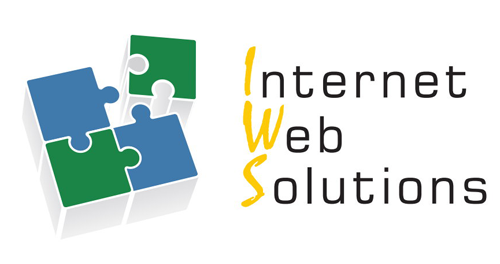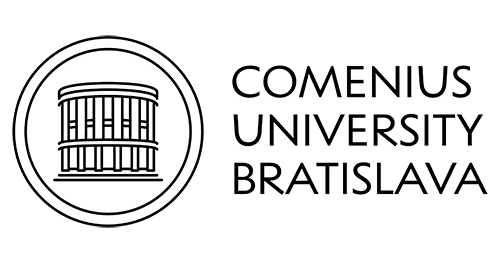|
Teaser
Did you know that you can transform products into services and improve your business? By adding services to your product-focused business, you can deliver the desired outcome to your customers and create new revenue streams. All kinds of companies can benefit from servitization, by offering additional services to supplement their traditional products such as maintenance, fleet management, customization, resource optimization, pay-per-use models, etc… Learn about servitization in order to innovate your business model, better response to market trends, improve responses to your customer needs and obtain more revenue in the long run.
Video
| ||||||||||||||||||||||||||||||||||||||||||||||||||||||||||||||||
|
What is servitization? IntroductionClick to read
 Servitization is the transformation of products or resources into services, meaning selling entire solutions instead of just products. It’s mostly defined as adding services to your product-focused business, in order to deliver a desired outcome to your customers and create new revenue streams, therefore making your business primarily solution-focused. Some well-known examples are Netflix and Spotify - delivering media as a service, rather than customers buying the CDs, DVDs et cetera that produce those outcomes. In engineering, Rolls-Royce is delivering power-by-the-hour to airplane companies instead of selling engines. HILTI is selling a package of services enabling maximum tools utilization, instead of just selling tools for construction sites. All kinds of companies can benefit from servitization, by offering additional services to supplement their traditional products such as maintenance, fleet management, customization, resource optimization, pay-per-use models, etc.. In this module you will learn what servitization is, the benefits it brings and challenges that companies have to overcome in case to embrace it. We can say that there are three levels of services complementing products.
Is it for me?Click to read
 Traditionally, servization initiatives were something reserved for large companies which had substantial resources and knowledge to develop and introduce new services. But it has been proven that small and medium businesses are capable to servitize their offer and greatly benefit from it. Bigger companies are usually able to make the transition to servitization more easily because of their network and their budget. But for MSMEs there is also a significant opportunity as they are more agile and flexible in changing course of the business. Furthermore, with digitization and all the new technologies on the market, these smaller companies are able to successfully reap the benefits of servitization. As customers continue to expect additional benefits and long lasting relationships, companies of all sizes are adding services to their product offer. Companies that take advantage of the opportunity in service will become more financially secure and build stronger customer relationships. Being SMEs or large companies, the winners will be those who succeed in adding different types of services to their products and who create real value for their customers. Examples:
How to implement servitization in your company? Service Innovation Methodology – the transformation processClick to read
 Creation and improvement of services, often referred as service innovation or service design, is an interdisciplinary approach that combines different methods and tools from various disciplines. This part of the module is going to introduce you with the Service Innovation Methodology developed by the international group of business support organizations gathered under THINGS+ project, co-financed by the Interreg Central Europe programme. Service Innovation Methodology is developed specifically for SMEs (applicable also in micro enterprises) and defined by:
Service Innovation Methodology is a coherent, robust, and operational methodology for the improvement of entrepreneurs’ skills in the development of product-based services, that will allow them to implement servitization in 4 phases: Phase 1: Identification of opportunities for servitization based on existing capabilities and knowledge that reside within company – „inside-out” identification of opportunitiesClick to read

This phase is about unveiling hidden knowledge and starting the shift of the perspective – from “product centricity” into “customer centricity”. The main task is to clarify offer (product and service bundle) – define the boundaries of the starting content of the servitization project and identify opportunities based on existing knowledge about customers, markets and relevant and influential factors that can shape competitive position of the company. Phase 1 - Steps to be taken:
Phase 2: Opportunities based on external developments and new insights – “outside-in” identification of opportunitiesClick to read

Next step is to visually capture the entire cycle of customer’s experience from the moment the customer’s problem emerges until after the solution is applied. Stages of the journey can be generic (preparation, purchase, delivery, use, supplements, maintenance, disposal) or more precisely defined. After all stages are defined, customers behavior at every stage should be analyzed (define what is the customer doing-thinking-feeling) so any unsatisfactory experience (pain points) can be identified and recognized as possible opportunity to develop innovative service. This phase ends with initial Servitization concept based on opportunities which will be recognized as most promising and doable. In case of more possibilities, the company will have to make a decision on which one to pursue, having in mind its own capabilities, challenges and possible gains. Phase 2 - Steps to be taken:
Phase 3: Change and implementation designClick to read

After the customer side is defined, company perspective should be explored in order to define: which are the touchpoints, in what way to organize them and what will be the most appropriate way to support the newly developed customer side. Next step is to integrate the planned changes into the business model. To be able to do it, companies should understand both existing key elements of their business model and changes that are required. Once existing “as is” and planned “to be” business models are defined - overlaps and differences need to be checked. Phase 3 - Steps to be taken:
Phase 4: Change and implementation designClick to read
 Fourth phase’s main focus is the creation of the strategy for the commercialization of the servitized product. The key aim is to develop a sound commercialization strategy and implementation plan. Since companies could face many “unknowns” during the implementation, traditional strategic management approach based on the indicators, thresholds and goals is not appropriate. Discovery driven (or assumption based) planning is strongly suggested. At this initial commercialization stage, learning what is possible is much more important than just achieving what was planned. Phase 4 - Steps to be taken:
Key tools to be usedClick to read

Challenges for the companyClick to read

Why servitization? Benefits of servitizationClick to read
 Despite the challenges for the company introducing servitization, there are many benefits companies should strive for:
New technologies as servitization enablerClick to read
 New technologies play an important role in enabling servitization and innovative services in general. These technologies allow new ways of product-service integration and added value creation for the customers, and at the same time more efficient resource utilization by the companies. Servitization fosters digitalization of MSMEs by creating new revenue streams based on digitalized products and maximizes the potential of new technologies. Technologies like Internet of Things, sensors, RFID, network & communication technologies, data analytics, space technologies, additive manufacturing, etc. can be involved in providing product-based services in different ways and different levels of service maturity. Some interesting aspects of innovative services enabled by new technologies are:
Every interaction in the digital world generates data that enables new revenue generating services. New technologies are generating more data, and at the same time, new customer needs are forcing companies to adopt new technologies to serve them better and deliver added value. Either way, servitization is a process that improves adoption rate of new technologies. New technology New technology Depending on the level of product connectivity, data-driven service fits into one of 4 maturity levels:
Path towards sustainabilityClick to read
 The continuous growth of the global population and economy are resulting with an increasing demand for energy and other resources. Although efficient technologies are available and their economic benefits are clear, there are different barriers that prevent these from being deployed, like high up-front costs for example. Sustainability goals require introduction of these technologies and solutions which are expensive and complex to deliver, and this is where servitized business models play a significant role. By optimizing entire value chain, servitization leads to more efficient utilization of resources and improved energy consumption, therefore enhances environmental performance. Servitization as an innovative business model has implications not just for the companies engaging with it, but also has wider societal implications. For example in food supply chain, servitization encourages introduction of new technologies and different partners, making food production more efficient, secure and available. Circularity is also a driver for servitization. In delivering a servitized product there is a motivation to reuse, recycle and prolong product lifecycle since they are being optimized for longer use and outcome delivery. Design of a servitized product is looking at the entire lifecycle of the product, rationalizing its use in order to deliver the desirable outcome. Companies that design a product are responsible for delivery, use, service and efficiency over a longer period of time. In a servitized context, where the company retains ownership and responsibility for the products, they are motivated to optimize their use and pursue circular economy principles. Summing up Summing upClick to read

|
Objectives/goals:
At the end of this module, you will be able to:
- Understand the concept of servitization,
- Encourage servitization initiatives in your work,
- Apply tools and methods that support servitization process,
- Identify business opportunities arising from new technologies.
Critical thinking
Analytical thinking
Problem-solving
Business management
Adaptability
Creativity
Openness
Empathy
Innovation
Cooperation
Sustainability
✓ Service is no longer a cost but a value creator
✓ Scalable (for any size of company)
✓ Potentially more revenue (and growth opportunity)
✓ Rationalization of resources and expenses for both company and its customers
✓ Increasing customer loyalty
Keywordsservitization, service innovation, service design, business model innovation, digitalization
Bibliography
- Forbes (2022, March 28). What Is Servitization And How Can It Help Your Business?. https://www.forbes.com/sites/sap/2022/03/28/what-is-servitization-and-how-can-it-help-your-business/?sh=404727a97cf5
- ARC Advisory Group (2018, November 14). Servitization for Industrial Products. https://www.arcweb.com/blog/servitization-industrial-products
- Scheper.Co - Engineering & Consulting. Servitization maturity Stages. https://www.scheper.co/solution-servitization-maturity-servitization-week-2-6/
- Exor International (2021, May 6). What is servitization?. https://www.exorint.com/en/blog/what-is-servitization
- ESA automation (2022, May 31). The Three Levels of Servitization: Base, Intermediate, Advanced. https://www.esa-automation.com/en/the-three-levels-of-servitization-base-intermediate-advanced/
- NextService (2020, September 22). Servitization for Manufacturers: The Future of Business?. https://nextservicesoftware.com/news/servitization-for-manufacturers/
- Caddify. Why Does Successful Servitization Require Mobile Apps?. https://caddify.com/2019/12/07/why-does-successful-servitization-require-mobile-apps/
- MSI Data (2015, December 4). What is Servitization and Why Should Manufacturers Care. https://www.msidata.com/what-is-servitization
- Semcon. Is your business on the road to servitization?. https://semcon.com/offerings/servitization/
- NexSys (2022, November 18). Jargon Buster: Servitization Explained. https://www.nexsys.co.uk/knowledge-hub/servitization-jargon-buster/
- The Advanced Services Group (2022). Leading examples of servitization. https://www.advancedservicesgroup.co.uk/leading-examples-of-servitization/
- Emerald Publishing Limited (2020, January 28). What is servitization of manufacturing? A quick introduction. https://www.emeraldgrouppublishing.com/opinion-and-blog/what-servitization-manufacturing-a-quick-introduction
- Firmhouse (2020, May 15). The advantages and challenges of servitization. https://www.firmhouse.com/blog/the-advantages-and-challenges-of-servitization
- Field Service News. The Multiple Challenges of Servitization. https://fieldservicenews.com/think-tank-sessions/the-multiple-challenges-of-servitization/
- World Economic Forum (2020, November 20). What is servitization, and how can it help save the planet?. https://www.weforum.org/agenda/2020/11/what-is-servitization-and-how-can-it-help-save-the-planet/
- IEDP (2017, July 5). Servitization A Model for Growth - How manufacturers are adding value by adding services. https://www.iedp.com/articles/servitization-a-model-for-growth/
- The service design group. 5 Recent Examples of Servitization. https://theservicedesigngroup.com/insights/5-recent-examples-of-servitization/
- The manufacturer (2018, August 24). Three examples that make the case for service-based models. https://www.themanufacturer.com/articles/three-examples-that-make-the-case-for-service-based-models/
- ScienceDirect. Servitization of SMEs through Strategic Alliances: a Case Study. https://www.sciencedirect.com/science/article/pii/S2212827119306225
- HrÄak (2017). Trends in servitization: evidence from Croatia. https://hrcak.srce.hr/file/280749
- Cambridge Service Alliance. The future of servitization: Technologies that will make a difference. https://cambridgeservicealliance.eng.cam.ac.uk/system/files/documents/150623FutureTechnologiesinServitization.pdf
- Interreg Central Europe Things+ project https://www.interreg-central.eu/Content.Node/THINGS-.html
- Interreg Central Europe Boost4BSO project https://boost4bso.eu/ https://www.interreg-central.eu/Content.Node/Boost4BSO.html
- Future of field services. The Intersection of Servitization and Sustainability https://futureoffieldservice.com/2021/09/08/the-intersection-of-servitization-and-sustainability/
- WeForum. What is servitization, and how can it help save the planet? https://www.weforum.org/agenda/2020/11/what-is-servitization-and-how-can-it-help-save-the-planet/
https://www.interreg-central.eu/Content.Node/THINGS-.html
https://boost4bso.eu/knowledge-exchange
https://www.aston.ac.uk/research/bss/abs/centres-hubs/advanced-services-group
https://www.youtube.com/watch?v=jiXOGlzPeBY&t=8s&ab_channel=AVOvidea
innovation process of amending product-focused business with innovative services.
business model where value is delivered in cohesive mix of products and services.
description of organization’s way of creating, delivering and capturing value.
benefits for customers promised to be delivered by the company
model of economy which involves sharing, reusing and recycling existing materials and products in order prolong their lifecycle and tackle global challenges as climate change, biodiversity loss, waste, and pollution.
Related training material
 Play Audio
Play Audio 




 Case studies:
Case studies:










